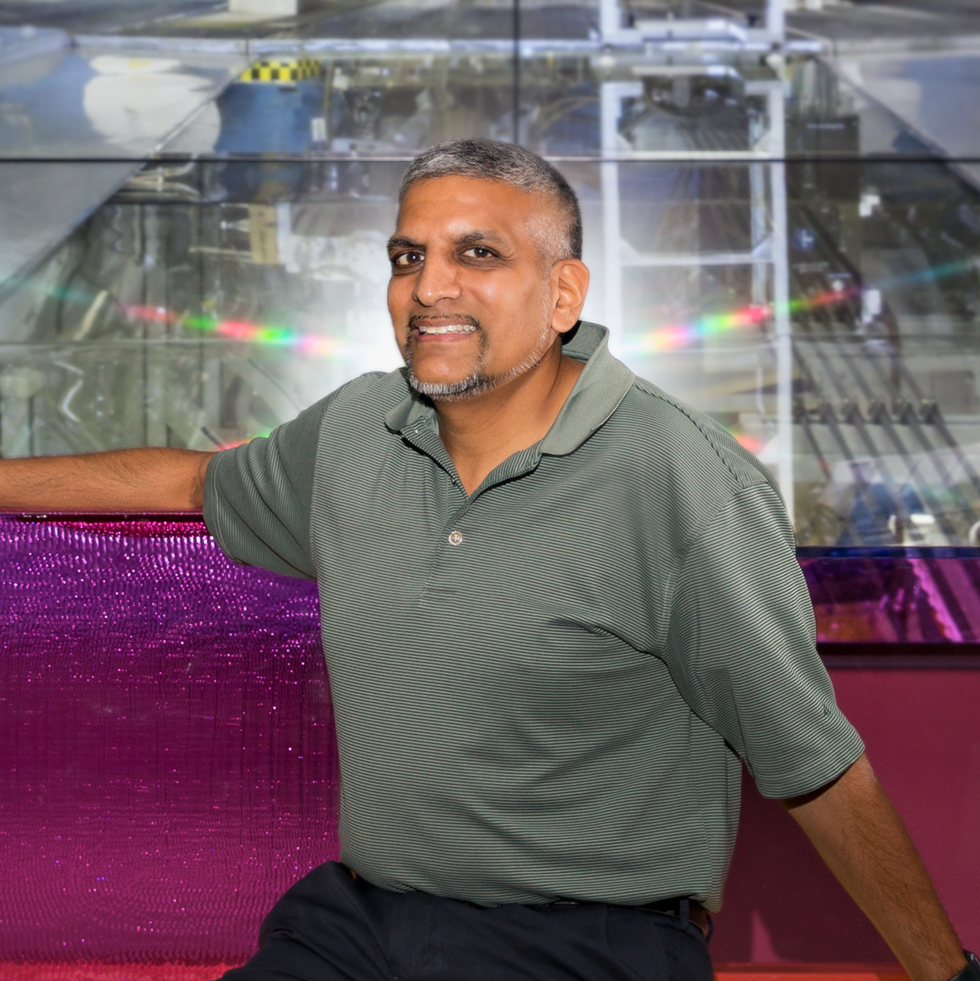Tayyab Suratwala
Lawrence Livermore National Laboratory, United StatesFor numerous, high-impact scientific & technological contributions improving optic technologies, specifically in areas of optical fabrication and high laser damage resistant optics & coatings, enabling high-energy laser systems.

Tayyab Suratwala originally thought he wanted to be a medical doctor. However, he went into engineering because he discovered he liked physics more than biology. In his first year of college, he saw a superconductor levitate and was fascinated. He knew then that he wanted to study materials science. He was most interested by the fact that the way a material is made determines its properties and performance. Later in his undergraduate studies, he was introduced to optical materials and made that the focus of his PhD.
“At that time, this was wide open territory in optics,” says Tayyab. “The science of optics focused largely on the physics and applications, and not as much on materials science and engineering. As a materials scientist, I have a different view of optics challenges, which has provided unique opportunities during my career,” he explains.
Tayyab uses this knowledge in his current job as Program Director, Optics & Materials Science & Technology, working on the National Ignition Facility (NIF) at Lawrence Livermore National Laboratory. Tayyab started at LLNL just before the start of the NIF construction and considers this to have been “very fortuitous.” “NIF faced two large challenges with respect to the large 0.5 m-scale optics: making fused silica optics more damage resistant and needing to increase manufacturing production of optics while lowering the cost. LLNL was the perfect place to be, because the NIF’s success hinged, in part, on solving the optics’ challenges,” he says.
Tayyab notes this as a turning point in his career. He says that LLNL’s investment in understanding the science of optics fabrication and dedicating the necessary resources to solve difficult problems helped his career flourish. Through all of this, Tayyab says that he and his team turned optics fabrication into more of science to meet the needs of NIF. Twenty years later, he published a book, Materials Science and Technology of Optical Fabrication as a “culmination of a multi-decade journey to unwind the mysteries and complexities of the fascinating field of optical fabrication.”
Tayyab says that the field of optical production is still in its infancy and that there is a lot to be done to improve optical components which will, in turn, improve optical performance. He says that OSA has brought together the optical fabrication and optical design communities, which has helped and will continue to advance next generation optics.
“It’s not enough to do well in school and be technically strong,” he advises students. “You also need to learn to verbally communicate effectively, to work on and with a team, and to write well.”
Profile Written by Jeanette Gass
